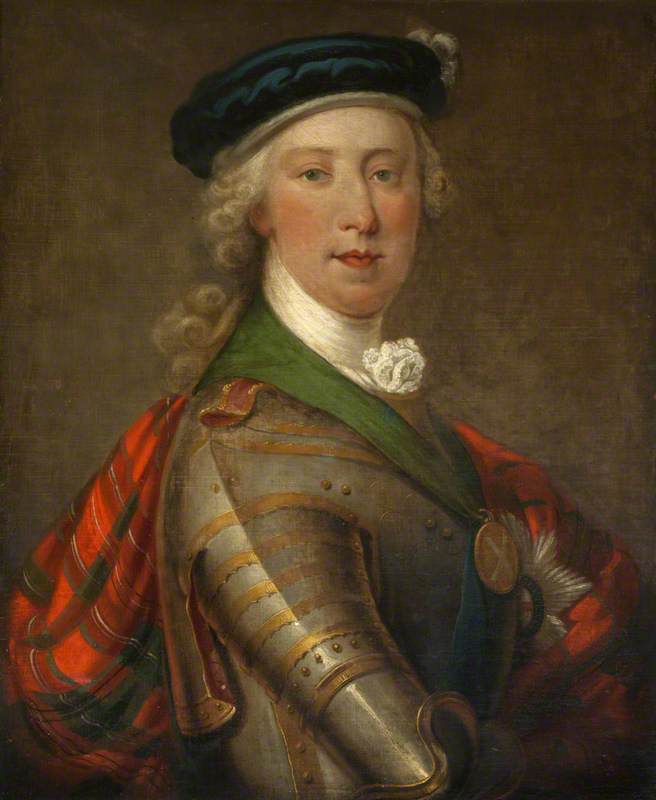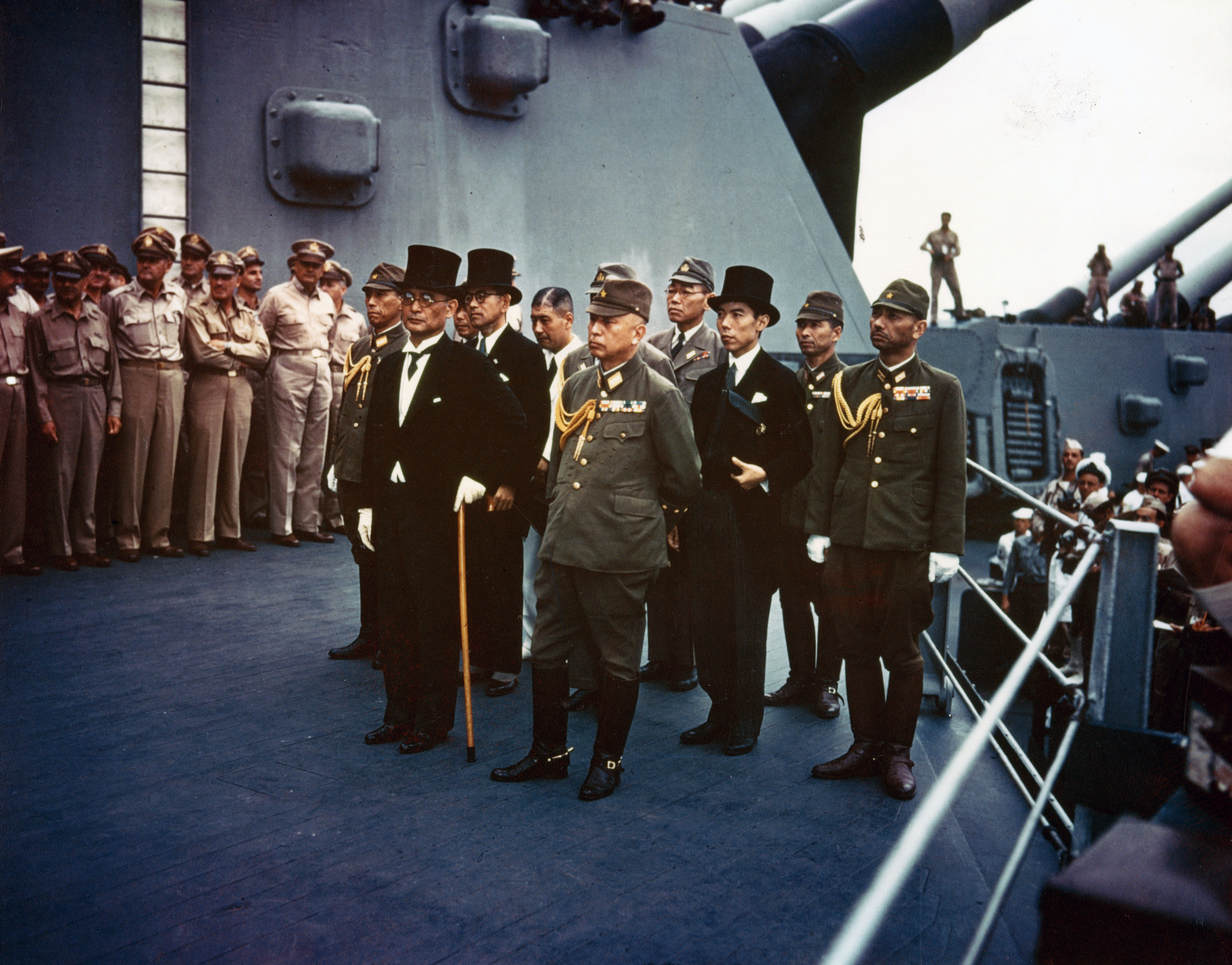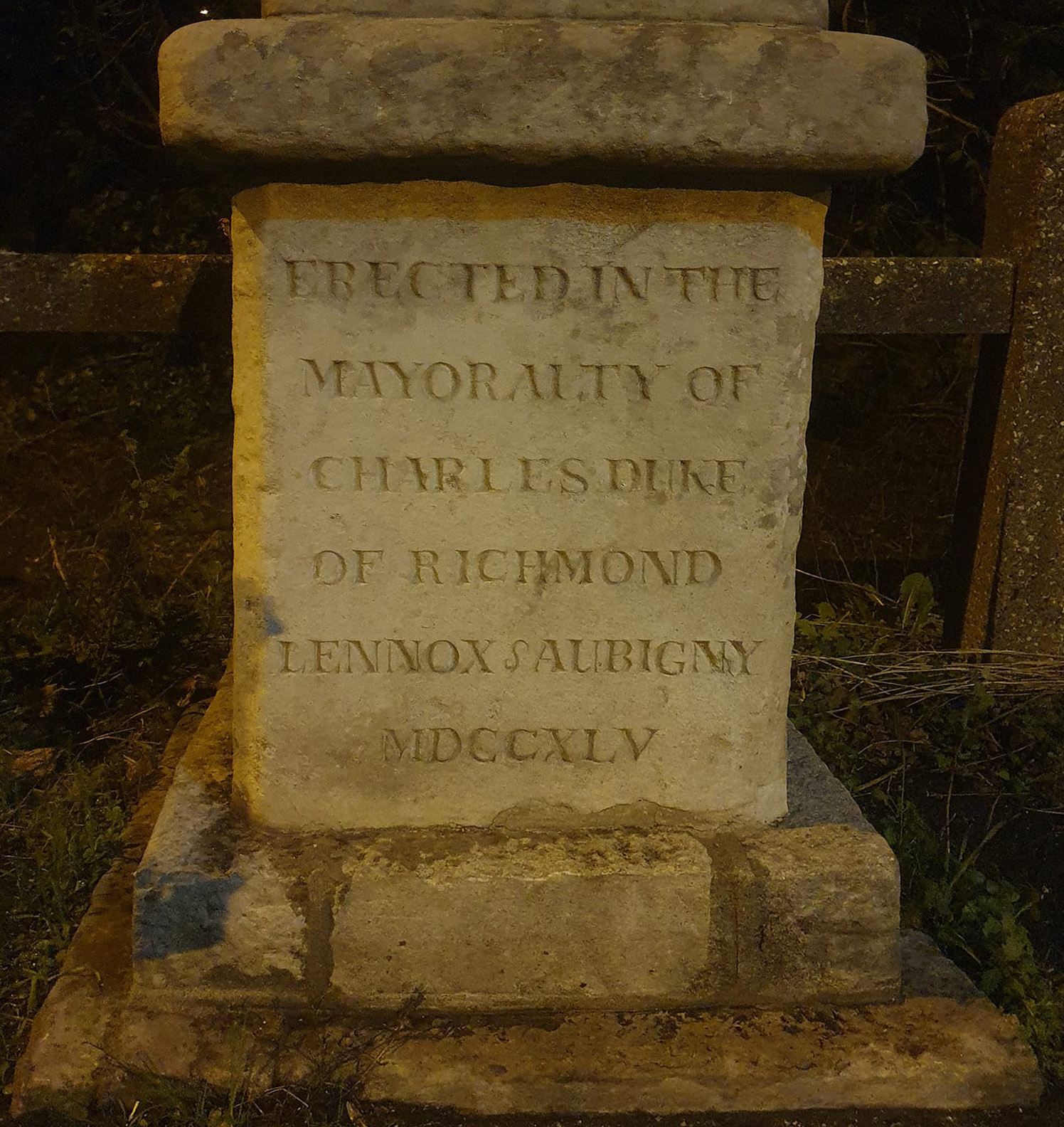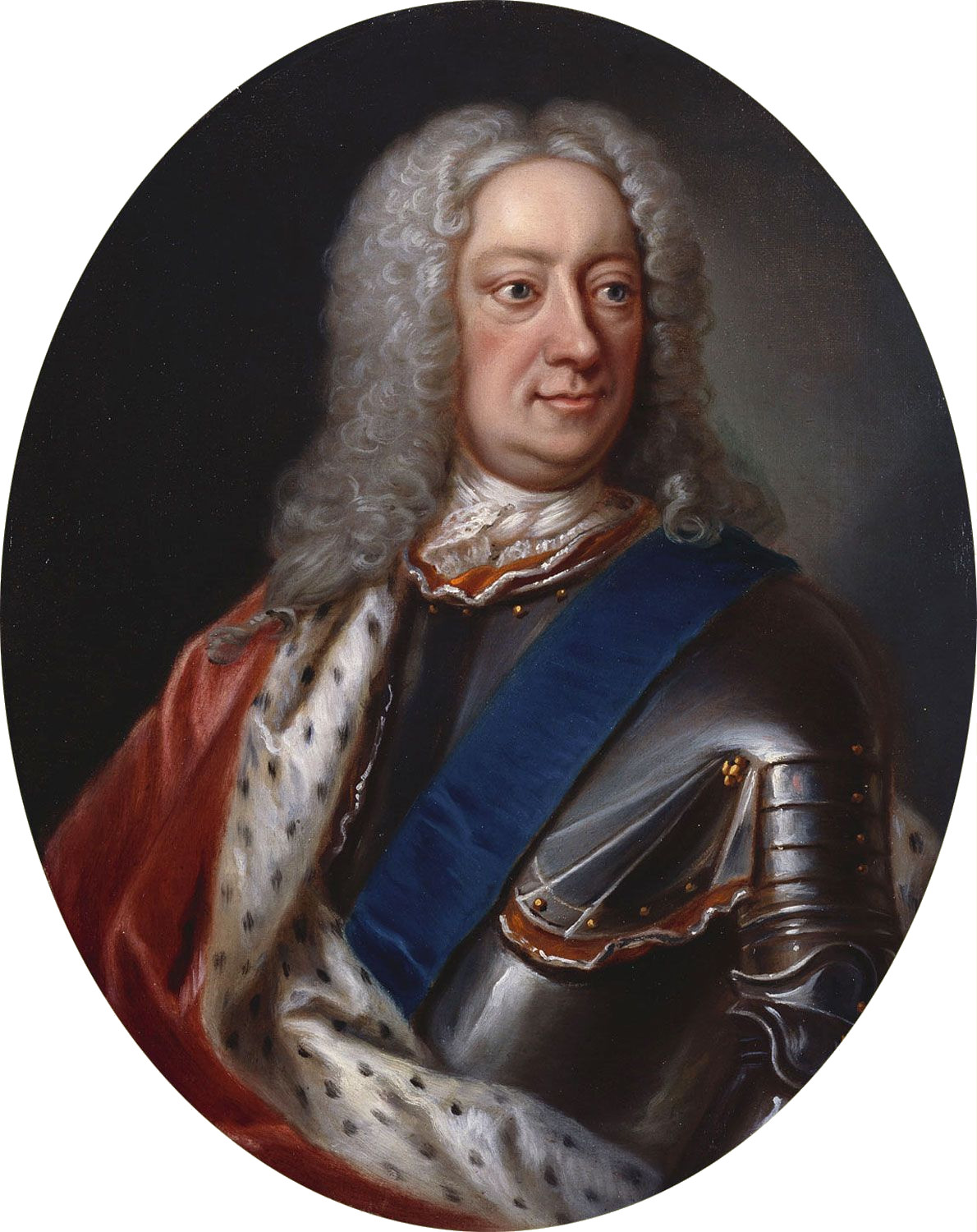|
Siege Of Carlisle (December 1745)
The siege of Carlisle (December 1745) took place from 21 to 30 December during the Jacobite rising of 1745, when a Jacobite garrison surrendered to government forces led by the Duke of Cumberland. The town had been captured by the Jacobite army that invaded England in November 1745 and reached as far south as Derby, before turning back on 6 December. They re-entered Carlisle on 19 December; leaving a garrison of 400 men, the main army continued its retreat into Scotland the next day. Advance elements of the government army reached Carlisle on 21 December, but siege operations were delayed until their heavy artillery arrived six days later. They commenced firing on 28 December, and the Jacobites surrendered on 30th; 384 prisoners were taken, some of whom were later executed and many others sentenced to transportation to the West Indies. Background The Jacobites crossed into England on 8 November and reached Carlisle on 10th. Previously an important border fortress, its def ... [...More Info...] [...Related Items...] OR: [Wikipedia] [Google] [Baidu] |
William Belford
General William Belford (1712 – 1 July 1780) was a British artillery officer who began his career in 1726. He was part of the first generation of artillery officers selected and promoted on merit, rather than connections. From 1743 to 1748, he served under the Duke of Cumberland in Flanders and Britain during the Jacobite rising of 1745. In 1751, he became Colonel of the Royal Regiment of Artillery, then of the First Battalion when this was expanded in 1757. He was Commandant of the Royal Arsenal from 1758 until his death in July 1780. Life William Belford was baptised at Maidstone, Kent on 11 October 1712, the son of Gustavus Belford and Sarah Duke. Gustavus Belford was a Captain of a Troop in his Majesty's own Royal Regiment of Dragoons and died in Chelsea on 26 June 1738. Gustavus Belford married Sarah Duke at Dartford, Kent on 16 December 1704. They had at least 12 children with only William, Hester (married William Harris in 1761), Mary (married William Pemble in 1761) an ... [...More Info...] [...Related Items...] OR: [Wikipedia] [Google] [Baidu] |
Jacobite Rising Of 1745
The Jacobite rising of 1745, also known as the Forty-five Rebellion or simply the '45 ( gd, Bliadhna Theàrlaich, , ), was an attempt by Charles Edward Stuart to regain the Monarchy of Great Britain, British throne for his father, James Francis Edward Stuart. It took place during the War of the Austrian Succession, when the bulk of the British Army was fighting in mainland Europe, and proved to be the last in Jacobite risings, a series of revolts that began in Jacobite rising of 1689, 1689, with major outbreaks in 1708, Jacobite rising of 1715, 1715 and Jacobite rising of 1719, 1719. Charles launched the rebellion on 19 August 1745 at Glenfinnan in the Scottish Highlands, capturing Edinburgh and winning the Battle of Prestonpans in September. At a council in October, the Scots agreed to invade England after Charles assured them of substantial support from English Jacobitism, Jacobites and a simultaneous French landing in Southern England. On that basis, the Jacobite Army (1745) ... [...More Info...] [...Related Items...] OR: [Wikipedia] [Google] [Baidu] |
Charles Edward Stuart
Charles Edward Louis John Sylvester Maria Casimir Stuart (20 December 1720 – 30 January 1788) was the elder son of James Francis Edward Stuart, grandson of James II and VII, and the Stuart claimant to the thrones of England, Scotland and Ireland from 1766 as Charles III. During his lifetime, he was also known as "the Young Pretender" and "the Young Chevalier"; in popular memory, he is known as Bonnie Prince Charlie. Born in Rome to the exiled Stuart court, he spent much of his early and later life in Italy. In 1744, he travelled to France to take part in a planned invasion to restore the Stuart monarchy under his father. When the French fleet was partly wrecked by storms, Charles resolved to proceed to Scotland following discussion with leading Jacobites. This resulted in Charles landing by ship on the west coast of Scotland, leading to the Jacobite rising of 1745. The Jacobite forces under Charles initially achieved several victories in the field, including the Battle of ... [...More Info...] [...Related Items...] OR: [Wikipedia] [Google] [Baidu] |
Surrendered On Terms
An unconditional surrender is a surrender in which no guarantees are given to the surrendering party. It is often demanded with the threat of complete destruction, extermination or annihilation. In modern times, unconditional surrenders most often include guarantees provided by international law. Announcing that only unconditional surrender is acceptable puts psychological pressure on a weaker adversary, but it may also prolong hostilities. Examples Banu Qurayza during Muhammad's era After the Battle of the Trench, in which the Muslims tactically overcame their opponents while suffering very few casualties, efforts to defeat the Muslims failed, and Islam became influential in the region. As a consequence, the Muslim army besieged the neighbourhood of the Banu Qurayza tribe, leading to their unconditional surrender.Watt, ''Muhammad: Prophet and Statesman'', pp. 167–174. All the men, apart from a few who converted to Islam, were executed, while the women and children were e ... [...More Info...] [...Related Items...] OR: [Wikipedia] [Google] [Baidu] |
Whitehaven
Whitehaven is a town and port on the English north west coast and near to the Lake District National Park in Cumbria, England. Historically in Cumberland, it lies by road south-west of Carlisle and to the north of Barrow-in-Furness. It is the administrative seat of the Borough of Copeland, and has a town council for the parish of Whitehaven. The population of the town was 23,986 at the 2011 census. The town's growth was largely due to the exploitation of the extensive coal measures by the Lowther family, driving a growing export of coal through the harbour from the 17th century onwards. It was also a major port for trading with the American colonies, and was, after London, the second busiest port of England by tonnage from 1750 to 1772. This prosperity led to the creation of a Georgian planned town in the 18th century which has left an architectural legacy of over 170 listed buildings. Whitehaven has been designated a "gem town" by the Council for British Archaeology due to ... [...More Info...] [...Related Items...] OR: [Wikipedia] [Google] [Baidu] |
Charles II Of England
Charles II (29 May 1630 – 6 February 1685) was King of Scotland from 1649 until 1651, and King of England, Scotland and Ireland from the 1660 Restoration of the monarchy until his death in 1685. Charles II was the eldest surviving child of Charles I of England, Scotland and Ireland and Henrietta Maria of France. After Charles I's execution at Whitehall on 30 January 1649, at the climax of the English Civil War, the Parliament of Scotland proclaimed Charles II king on 5 February 1649. But England entered the period known as the English Interregnum or the English Commonwealth, and the country was a de facto republic led by Oliver Cromwell. Cromwell defeated Charles II at the Battle of Worcester on 3 September 1651, and Charles fled to mainland Europe. Cromwell became virtual dictator of England, Scotland and Ireland. Charles spent the next nine years in exile in France, the Dutch Republic and the Spanish Netherlands. The political crisis that followed Cromwell's death in 1 ... [...More Info...] [...Related Items...] OR: [Wikipedia] [Google] [Baidu] |
Charles Lennox, 2nd Duke Of Richmond
Charles Lennox, 2nd Duke of Richmond, 2nd Duke of Lennox, 2nd Duke of Aubigny, (18 May 17018 August 1750) of Goodwood House near Chichester in Sussex, was a British nobleman and politician. He was the son of Charles Lennox, 1st Duke of Richmond, 1st Duke of Lennox, the youngest of the seven illegitimate sons of King Charles II. He was the most important of the early patrons of the game of cricket and did much to help its evolution from village cricket to first-class cricket. Early life Lennox was styled Earl of March from his birth in 1701 as heir to his father's dukedom. He also inherited his father's love of sports, particularly cricket. He had a serious accident at the age of 12 when he was thrown from a horse during a hunt, but he recovered and it did not deter him from horsemanship. March entered into an arranged marriage in December 1719 when he was still only 18 and his bride, Hon. Sarah Cadogan, was just 13, in order to use Sarah's large dowry to pay his considera ... [...More Info...] [...Related Items...] OR: [Wikipedia] [Google] [Baidu] |
Cannon At Berry Head
A cannon is a large-caliber gun classified as a type of artillery, which usually launches a projectile using explosive chemical propellant. Gunpowder ("black powder") was the primary propellant before the invention of smokeless powder during the late 19th century. Cannons vary in gauge, effective range, mobility, rate of fire, angle of fire and firepower; different forms of cannon combine and balance these attributes in varying degrees, depending on their intended use on the battlefield. A cannon is a type of heavy artillery weapon. The word ''cannon'' is derived from several languages, in which the original definition can usually be translated as ''tube'', ''cane'', or ''reed''. In the modern era, the term ''cannon'' has fallen into decline, replaced by ''guns'' or ''artillery'', if not a more specific term such as howitzer or mortar, except for high-caliber automatic weapons firing bigger rounds than machine guns, called autocannons. The earliest known depiction of canno ... [...More Info...] [...Related Items...] OR: [Wikipedia] [Google] [Baidu] |
Lichfield
Lichfield () is a cathedral city and civil parish in Staffordshire, England. Lichfield is situated roughly south-east of the county town of Stafford, south-east of Rugeley, north-east of Walsall, north-west of Tamworth and south-west of Burton Upon Trent. At the time of the 2011 Census, the population was estimated at 32,219 and the wider Lichfield District at 100,700. Notable for its three-spired medieval cathedral, Lichfield was the birthplace of Samuel Johnson, the writer of the first authoritative ''Dictionary of the English Language''. The city's recorded history began when Chad of Mercia arrived to establish his Bishopric in 669 AD and the settlement grew as the ecclesiastical centre of Mercia. In 2009, the Staffordshire Hoard, the largest hoard of Anglo-Saxon gold and silver metalwork, was found south-west of Lichfield. The development of the city was consolidated in the 12th century under Roger de Clinton, who fortified the Cathedral Close and also laid ou ... [...More Info...] [...Related Items...] OR: [Wikipedia] [Google] [Baidu] |
Newcastle Upon Tyne
Newcastle upon Tyne ( RP: , ), or simply Newcastle, is a city and metropolitan borough in Tyne and Wear, England. The city is located on the River Tyne's northern bank and forms the largest part of the Tyneside built-up area. Newcastle is also the most populous city of North East England. Newcastle developed around a Roman settlement called Pons Aelius and the settlement later took the name of a castle built in 1080 by William the Conqueror's eldest son, Robert Curthose. Historically, the city’s economy was dependent on its port and in particular, its status as one of the world's largest ship building and repair centres. Today, the city's economy is diverse with major economic output in science, finance, retail, education, tourism, and nightlife. Newcastle is one of the UK Core Cities, as well as part of the Eurocities network. Famous landmarks in Newcastle include the Tyne Bridge; the Swing Bridge; Newcastle Castle; St Thomas’ Church; Grainger Town including G ... [...More Info...] [...Related Items...] OR: [Wikipedia] [Google] [Baidu] |
Thomas Pelham-Holles, 1st Duke Of Newcastle
Thomas Pelham-Holles, 1st Duke of Newcastle upon Tyne and 1st Duke of Newcastle-under-Lyne, (21 July 169317 November 1768) was a British Whig statesman who served as the 4th and 6th Prime Minister of Great Britain, his official life extended throughout the Whig supremacy of the 18th century. He is commonly known as the Duke of Newcastle. A protégé of Sir Robert Walpole, he served under him for more than 20 years until 1742. He held power with his brother, Prime Minister Henry Pelham, until 1754. He had then served as a Secretary of State continuously for 30 years and dominated British foreign policy. After Henry's death, the Duke of Newcastle was prime minister six years in two separate periods. While his first premiership was not particularly notable, Newcastle precipitated the Seven Years' War, and his weak diplomacy cost him the premiership. After his second term, he served briefly in Lord Rockingham's ministry, before he retired from government. He was most effective ... [...More Info...] [...Related Items...] OR: [Wikipedia] [Google] [Baidu] |
John Gordon Of Glenbucket
John Gordon of Glenbucket (c.1673 – 16 June 1750) was a Scottish Jacobite, or supporter of the claim of the House of Stuart to the British throne. Laird of a minor estate in Aberdeenshire, he fought in several successive Jacobite risings. Following the failure of the 1745 rising, in which he served with the rank of Major-General, he escaped to Norway before settling in France, where he died in 1750. Despite a reputation in later popular history as “one of the most romantic of Jacobite heroes”,Tayler, Henrietta. “John Gordon of Glenbucket”, ''Scottish Historical Review'', (1948) v27, 10, p.165 Glenbucket was a controversial figure who acted as a government agent between 1715 and 1745, and was accused of forcibly conscripting men during the 1745 rising. Early life Glenbucket was born in 1673 into an obscure junior branch of the Gordon family; his grandfather, George, had held the tack of Noth. His father, John Gordon of Knockespock (c.1654-1704) purchased the small ... [...More Info...] [...Related Items...] OR: [Wikipedia] [Google] [Baidu] |










